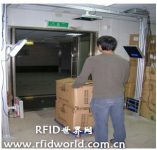
Application of RFID technology in the field of clothing
[ad_1]
EPC is a globally unified identification system newly developed in the world in recent years, and it is a revolutionary new technology. The EPC system applies traditional barcode technology to the identification and management of item categories, and develops RFID technology to the identification and management of individual items. After barcode technology, it will once again revolutionize product production, inventory, logistics, and products. A new technology in the tracking management model is the extension and expansion of the application of bar code technology. The brand clothing industry is the most suitable industry for applying RFID technology due to its characteristics. We look at how branded clothing can use RFID technology to improve the benefits:
1. RFID accelerates warehouse entry and exit and inventory check
The current warehousing and inventory are scanned by the barcode on the tag. The barcode has the advantages of cheap and high reading rate, but because the barcode must be sensed within a very small distance, and only a single item can be read at a time Therefore, the operator must find and read the labels inside the clothes. Generally, clothes have plastic outer packaging, so the efficiency of this scanning process is relatively low.
However, RFID does not have these problems. Because each RFID tag can store a single product code, the reading distance and the number of readings are also large. As long as the passage is passed, the clothing can be read in boxes, or it can be read by hand. The fetcher quickly counts, so that the data in the RFID tag on the product can be directly read into the system, avoiding manual operation time and possible errors. The application of RFID in warehouse entry and exit and inventory, not only improves the reading rate, but more importantly, saves a lot of labor costs. It can achieve 300,000 pieces of goods received per day, and the number of points per minute and verification is more than 800 pieces. Box accuracy: 99.99%

2. RFID records sales behaviors and improves store sales performance
Storefront applications can be divided into two aspects, namely: smart shelves and interactive inquiry machines. Hanging RFID tags on the goods on the smart shelf, the company can learn from the frequency of customers picking clothes, the degree of preference for different clothes. For the apparel retail industry, any data related to customer behavior has a high reference value for operators. Just data such as “Which piece of clothing is often picked up but not often purchased” can be used. Provide good improvement directions for R&D, design, and manufacturing teams.
If the brand can only obtain a small amount of demand information from the “smart shelf”, it means that it is not a successful product in itself. If a large amount of data is obtained from the “smart shelf” but cannot be obtained from the interactive query machine in the fitting room or in front of the fitting mirror, it is obvious that this product does not meet the needs of consumers or is too expensive. Because consumers browse the products on the shelves, but don’t plan to try them. When a large amount of data on the product is received from the shelf and fitting room at the same time, but the sales performance is still poor, it means that the product may be in production or the raw materials may be defective. If the brand owner understands the real problem, it can take immediate measures to find the right way to improve the work process and increase sales.

The interactive inquiry machine not only broadcasts corporate image advertisements to let consumers understand the corporate culture and product concepts, but more importantly, lets consumers know more about the products they are interested in. The built-in RFID barcode reader can read the information on the clothes of the consumer and present it. Consumers can understand the size and information of the product, the introduction of hot new products, and other recommended products without actively asking. , Clothing matching suggestions and other messages, arouse consumer interest and create sales opportunities.

According to statistical analysis, the sales of RFID stores increased by 14% compared with non-RFID stores. This is because more products are displayed for customers in RFID stores, and the quality of customer service in RFID stores has also been improved. This item-level RFID inventory management system can speed up store replenishment, improve sales staff’s work efficiency, and improve customer service levels. The system can guide the replenishment staff to the exact location of the warehouse, so that they can quickly find the goods, restock them in the store, and meet the needs of customers. Service efficiency has also increased by 10% to 25%. Other key advantages of the item-level RFID inventory management system include: the system can provide 99% store inventory visibility, and can reduce labor and inventory by up to 30%.
For detailed plans, please inquire!
Shanghai Shangge Information Technology Co., Ltd.
Contact: Zhang Wei
Contact number: 13482580234
Landline: 021-50807019 QQ:52132984
www.bizgrid.cn
[ad_2]





